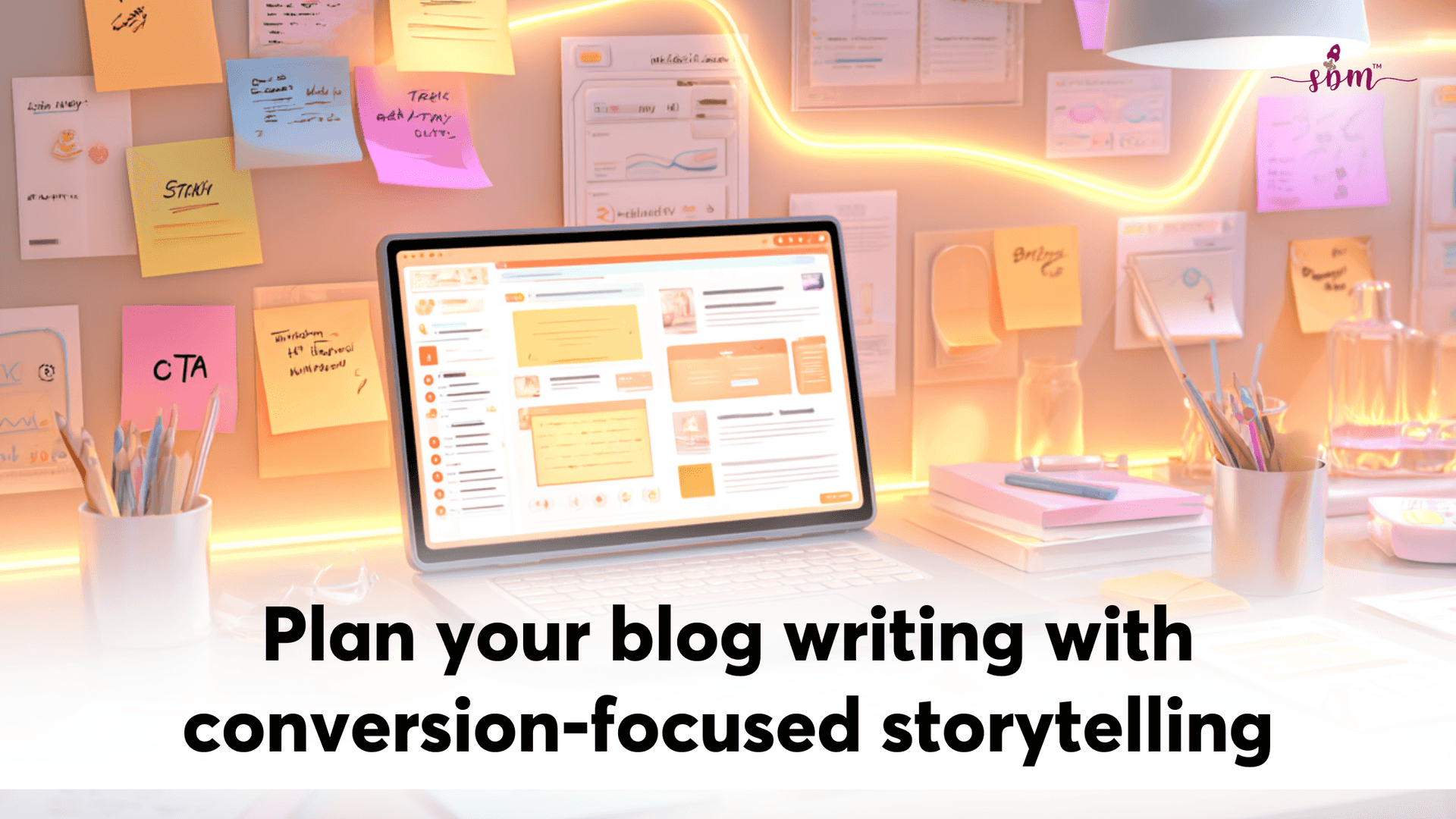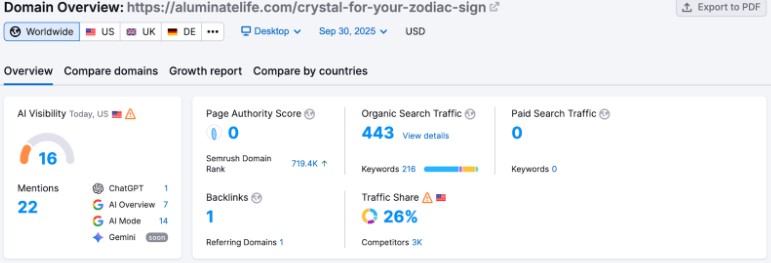Blog Writing for Conversions: How to Turn Readers into Paying Customers

“Write blogs, it drives traffic”-this might be one of the most common pieces of advice you've heard as a business owner. And technically, this is right too. But for businesses, blog writing is not just about website traffic. They also want:
Improved rankings
Better visibility
And most importantly, conversions.
Conversions! The part where most small businesses struggle to find a place. The reason? Most blogs are written to inform and not to act. Looking to change that for your small business? Small Biz Marketing brings the best blog writing strategies, so that each blog becomes your silent salesperson.
Why are Blogs more than just Traffic Drivers?
There are a variety of benefits of blog content writing for your business, generating traffic is just one of them. Here is what more can be done with blog writing.
1. Build Trust
Think of your blogs as first impressions for your businesses. High-ranking content makes you look more credible and trustworthy.
2. Showcase Expertise
Well-written blogs are the easiest and effective way to share your industry knowledge, expertise, and niche.
3. Helps Shape Decisions
Typically, most buyers consume content before going to sales. This way your blog helps shape a customer's purchasing decisions.
4. Converts Visitors and Lead Generation
Your blog content can reveal your brand's services, its features, practicality, and much more that can help in capturing leads.
Elements of a Conversion-Focused Blog
Quick question: ever wondered why some blogs engage better with the audience while others are simply skipped?
Several elements make a conversion-focused blog. When some blogs are written just to educate, a well-written blog can educate, engage, and convert
Here are some easy tips for writing a blog that does both, educates and sells.
1. Attention-Grabbing Headlines
Think of your blog heading as the showroom display. It plays a huge role in deciding if it gets a ‘yay’ or ‘nay’ from the customers.
Here are some tips that can help.
A headline should be catchy, invoking curiosity and interest in readers.
Play around with the “loss factor” in your blog headings. Example: Stop losing customers: here are 5 blogging mistakes to fix in 2025.
Keep your headings concise and clear.
Numbered headlines are likely to generate more engagement. Example: Top 5 tips for blog writing driving conversions.
It should be problem-solving and instantly direct readers why they should care.
2. Persuasive CTAs inside Blogs
CTAs are another stepping stone that make your blog a hit or miss. Most businesses and writers go with the usual, typical strategy: adding a CTA towards the end. Ever wondered what if your audience doesn't scroll that far?
Here is what you can do:
Add multiple CTAs throughout your blog. Do not clutter it, place it organically and strategically.
For instance, after solving a pain point: “want to solve your blog writing concerns with an easy trial? Try our free guide".
Towards the end, your blog CTA can be more direct and advertising.
Your CTAs should be persuasive and not intrusive. Buying or availing your services should feel like the next natural logical step for the readers.
3. Storytelling to Build Trust
It's important how you tell your brand's story. Catchy and engaging storytelling with your blog writing helps weave in human emotions to your blog. Your readers might not be able to remember “n” number of facts but they remember your story.
Add personal experiences that make your blog more relatable.
Success stories and testimonials can solidify your products and services.
Optimizing Blog Content for SEO & Conversions
Once you've read these blog writing strategies, comes the next question: do you write separate blogs for SEO, traffic, engagement, and conversions? The simple answer is no. Writing blog content for SEO and conversions can do the double duty: engagement and lead generation.
Here is how to do that.
Keyword Placement: Use your keywords wisely. They should be SEO-friendly and naturally placed throughout the blog, including headings, meta tags, and wherever needed. Free tools like Google Keyword Planner can help find relevant keywords.
Internal Linking: It hooks your audience to stay longer on your website while promoting your other, existing content.
Engagement hooks: Quizzes, polls, boost interaction with your content.
Examples of High-Converting Blog Posts
Here are some popular examples of layouts of a high-converting blog:
How-to-Guides
These connect to the audience who are actively trying to fix something. This means if your blog solves their problem, you instantly become their trusted guide, encouraging them with their purchase.
Case Studies
With so many claims and promises, case studies engage audiences with real figures, something that feels trustworthy and hard to ignore.
Comparison Blogs
With a variety of options available online and digitally, customers are often confused. Here comes comparison blogs. These educated the audience and in case you are one of the options, a persuasive post can help you win and convert.
Tools to improve Blog Conversions
If you've come this far, chances are you really want to draft a blog that is visible and upselling. But do you have to do it all on your own? Well, no. Here are some easily accessible tools that can accentuate your blog writing.
Grammarly or Hemingway can help you polish your writing and make it more readable with easy suggestions.
Google Analytics, to see what's working with your content and what needs adjustments.
Crazy Egg, to look into behavior analytics, tracking how readers engage with your blog.
Optimizely, for A/B testing to compare different versions of your web page elements.
Additionally, with Small Biz Marketing, you can grab an e-book that comes with effective SEO strategies to make your content visible and worth reading. With this, you also get an on-page SEO checklist and a beginner's guide to keyword research for free.
Grab Your Copy Now!
Real-World Example

Our blog post, "Crystal for Your Zodiac Sign," demonstrates solid organic visibility. According to the latest SEMrush report (as of September 30, 2025), the blog generates 443 organic search visits and ranks for 216 keywords.
While its Page Authority Score is currently 0, the content has still managed to secure visibility with 1 referring domain backlink and a 26% traffic share among 3,000 competitors.
Additionally, AI search visibility is emerging:
22 AI mentions overall (ChatGPT: 1, Google AI Overview: 7, AI Mode: 14).
AI Visibility Score: 16 (US), signaling early traction in AI-powered search environments
Key Elements of Success
SEO, 443 organic visitors, despite a low Page Authority Score, validates our belief that SEO compounds over time. The traffic share of 26% shows strong positioning among competitors.
Engaging Content Structure, strategic use of well-structured lists, subheadings (H2/H3), and keyword-rich sections continue to improve readability and SEO signals.
Balanced Promotion and Accessible Language, educational insights, and subtle promotional elements in simple, accessible language make the content appealing.
Relatable Keywords, focus on low-to-medium volume, intent-driven keywords (216 in total) instead of high-volume generic terms, the blog captures relevant traffic.
Conclusion
Your blog tells your brand story. But remember, not every story engages the same with the audience. You can actually make a mark by making your blog more problem-solving, SEO-optimised, humane, and empathetic. Think of it this way: anyone can write a blog, what makes you different?
However, sometimes finding answers to these questions and exploring this complex world of blog writing can be a bit overwhelming for businesses out there.
That's when you might need professional support, someone who holds your hand, identifies your brand, and tells your story with authenticity and expertise. Small Biz Marketing helps you do that.
Contact us at Info@smallbizmarketing.com and let's sit together to conquer Google algorithms and trends.
Frequently Asked Questions
1. What is blog writing for conversions?
Blog writing for conversions means writing blog content that not only generates traffic but transforms readers into loyal, paying customers.
2. How can blog posts turn readers into paying customers?
There are several ways to use your blog posts to turn your readers into customers. For instance, it should be problem-solving, addressing the needs and pain points of the audience. It should be authentic, SEO optimized with CTAs.
3. What are the best blog writing strategies to increase conversions?
Here are some best blog writing strategies to increase conversions:
Make headlines catchy
Add multiple CTAs naturally
Add meta tags with relevant keywords
Tell a story, naturally
Make your blog SEO optimised
4. Why is SEO important for blog writing that drives conversions?
Writing a blog for SEO is important. It brings the right people to your website, potential buyers who are already looking for solutions. Plus, it generates organic traffic and helps you secure Google rankings.
5. How long should a blog post be to drive conversions?
The ideal length for a blog post may vary based on the topic and detail being provided. Typically, 1800-2000 words are long enough to deliver a story and depth.
6. What common mistakes reduce blog conversions?
Here are some mistakes that reduce blog conversions for small businesses.
Weak headlines with no keyword placement
No clean CTAs
Being intrusive or oversalesy with CTA
Not understanding the customer intent
Writing simply for traffic and not conversion


